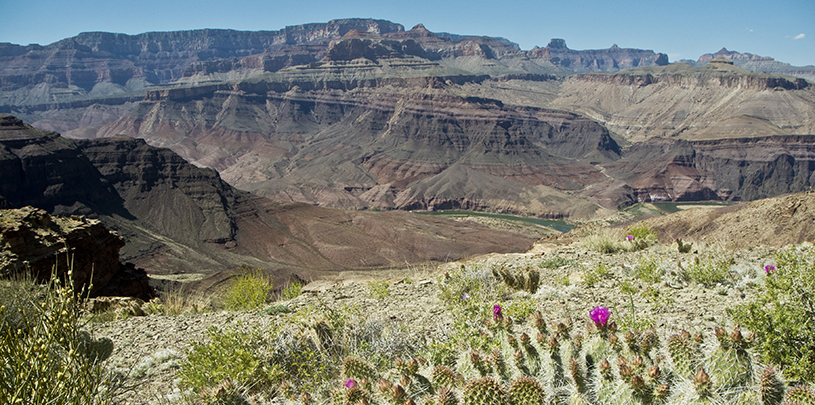
 by Ellen Heyn, Communications Associate
by Ellen Heyn, Communications Associate
Mining probably isn't the first thing that comes to mind when you think of the Grand Canyon. But in the early 20th century, before the Grand Canyon became a national park, miners flocked to the Grand Canyon in search of mineral riches. Today, several of the park's hiking trails follow old ore-hauling routes. You can see rusty wheelbarrows, steel cables, miners' camps, and other remnants of the canyon's extractive past. Learn about the Grand Canyon's mining history on these trails:

In 1911, the Santa Fe Railroad began aggressively developing the Hermit Basin as an alternative to the Bright Angel Trail, which was then operating as a toll road. In addition to building a tramway from the rim, the railroad company built the Hermit Trail as a state of the art rim-to-river route that serviced a luxury camp along Hermit Creek. Now in the hands of the Park Service, the Hermit Trail is accessible to all park-goers rather than a select few. Much of the Hermit Trail is rocky and eroded today, but a few sections of hand-fitted rock slabs hint at its former life. Hike details ›

The "hermit" of Hermit Basin was Louis D. Boucher, an immigrant from Quebec, Canada who arrived at the Grand Canyon in the early 1890s in search of ore. The prospector started mining copper along what's now called Boucher Creek and lived below the rim at Boucher Creek and Dripping Springs for about 20 years. Today, this trail lives up to its reputation as one of—if not the—most difficult trails on the Grand Canyon's south rim. Stunning vistas and a bit of exposure make this classic canyon hike one for the books. Hike details ›

In 1892, a miner named Pete Berry blasted a trail from the rim to Last Chance Mine on Horseshoe Mesa. Mules, carrying 200 pounds of ore each, made at least one trip a day, carting copper out and supplies in to the canyon. The mine closed in 1907 when copper prices plummeted, but the park service didn't gain control of the area until 1940. Today, you can see evidence of Horseshoe Mesa's mining history in the blue and green flecked rocks scattered along the trail. Rusty pieces of equipment scattered around the old mine site stand as artifacts of the extractive era, and radiation signs warn hikers of danger from the tailings piles. Grandview Trail, as it's called today, offers a glimpse of mining's lasting effects on the canyon. Hike details ›
Don't let a little snow keep you from visiting the Grand Canyon. Here's everything you need to know for a winter trip to the big ditch.
Read MoreFind out where to camp beneath the stars in and around Grand Canyon National Park.
Read MoreSettle in to see one of the most awe-inspiring landscapes in the world transform under an expansive, colorful sky.
Read More